Are Big Green Caterpillars Poisonous? Do you need to stay away if you spot them in your garden? Time to answer all these questions!
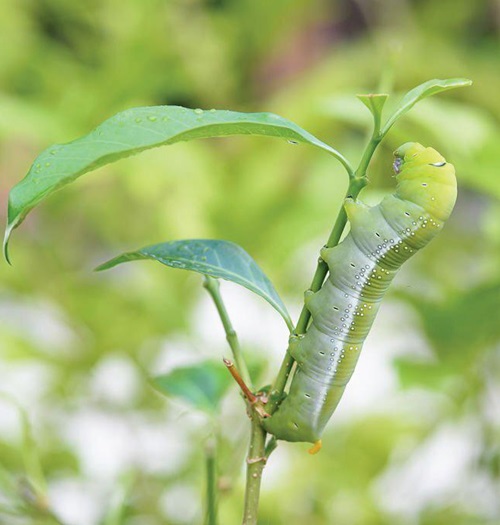
While their large size and vivid coloration can be alarming, their toxicity is a matter of great interest and importance. Are these gentle giants of the garden a hidden danger or simply a fascinating addition to the flora and fauna? Are Big Green Caterpillars Poisonous? Let’s find out!
20 Types of Green Caterpillars
Are Big Green Caterpillars Poisonous?
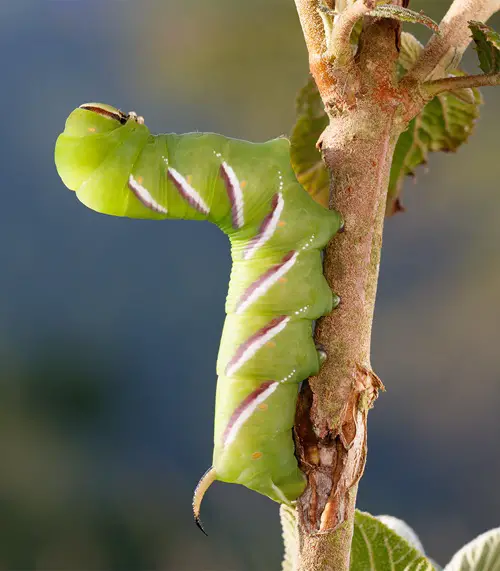
1. Types and Toxicity
- The term “big green caterpillar” can refer to several species, including the tomato hornworm, tobacco hornworm, and the Luna moth caterpillar.
- Most big green caterpillars found in gardens are not poisonous to humans. They may have physical defenses, like spines or hairs, which can irritate if handled, but they are not toxic if touched.
- The notable exception is the green Io moth caterpillar with spines that can deliver a painful sting.
2. Garden Impact
While these caterpillars are not dangerous to humans, they can concern your garden. Species like the tomato hornworm can cause significant damage to plants, particularly those in the nightshade family, like tomatoes, peppers, and eggplants.
What Colors Do Bees Hate? Find Out!
3. Handling and Safety
- If you need to remove these caterpillars from your plants, it’s advisable to wear gloves to avoid skin irritation.
- Gently relocate them to a different area away from your plants if you wish to keep them in your garden ecosystem, as they contribute to biodiversity and eventually turn into pollinating moths or butterflies.
Big Green Poisonous Caterpillars
None of the caterpillars mentioned here are life-threatening.
1. Saddleback Caterpillar

Scientific Name: Acharia stimulea
- Native Place: Eastern North America
- Toxicity Level: Highly toxic with venomous spines
- Diet: Feeds on a variety of plants, including trees, shrubs, and herbaceous plants
The Saddleback Caterpillar has a saddle-like hump on its back, hence its name. It packs a painful punch, as its venomous spines can cause skin irritation.
2. Puss Moth Caterpillar
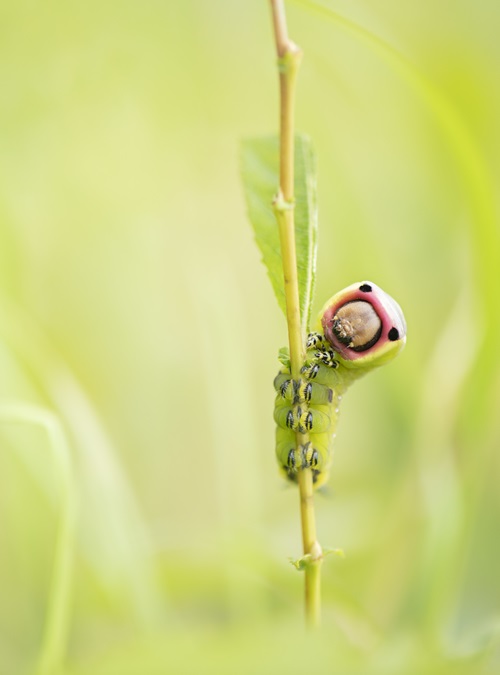
Scientific Name: Cerura vinula
- Native Place: Europe and Asia
- Toxicity Level: Mildly toxic
- Diet: Feeds primarily on the leaves of willow, poplar, and aspen trees
Covered in short, fine hairs, the Puss Moth Caterpillar inflicts an excruciating sting that develops into a raised welt and can potentially hospitalize susceptible individuals.
White Moth Meaning and Symbolism
3. Io Moth Caterpillar
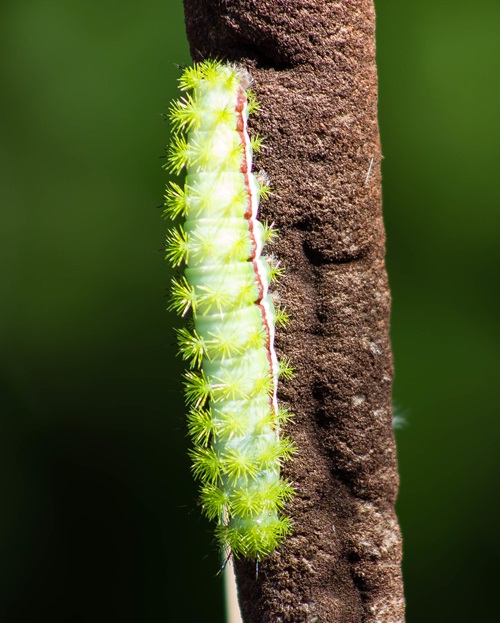
Scientific Name: Automeris io
- Native Place: Eastern United States
- Toxicity Level: Moderately toxic, with irritating spines
- Diet: Feeds on various plants, including oak, hickory, and sweetgum trees.
This caterpillar has arrays of spiny protrusions covering its body that can inject toxins, causing intense radiating pain that develops over several hours.
4. Pale Tussock Moth Caterpillar

Scientific Name: Calliteara pudibunda
- Native Place: Europe and Asia
- Toxicity Level: Mildly toxic
- Diet: Feeds on a variety of deciduous trees and shrubs, including oak, birch, and willow.
The Pale Tussock Moth Caterpillar has pale yellow hairs and striking orange and black tufts. However, it can cause skin irritation through microscopic hairs.
How to Identify Poisonous Plants in the Garden
5. Green Parasa Caterpillar
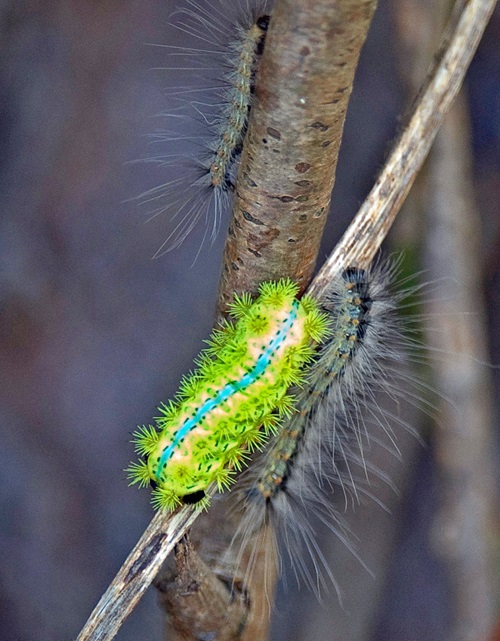
Scientific Name: Parasa lepida
- Native Place: Native to various regions in Asia
- Toxicity Level: Mildly toxic, with stinging spines
- Diet: Feeds on a variety of plants, including citrus trees and other fruit-bearing trees.
This bright green caterpillar has raised blackened spines along its body that impart an intensely burning sensation if touched, akin to a bee or wasp sting.


